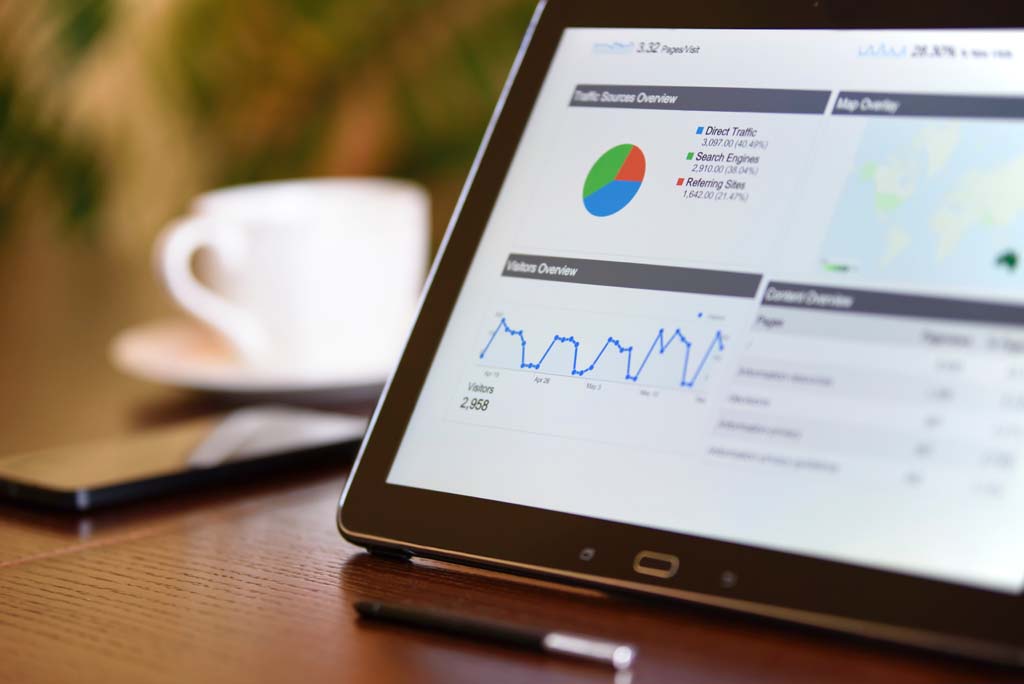Overview
Google Analytics is a free digital analytics tool that helps you to understand the way users find and interact with your website. It’s an invaluable source of information for marketers and brands who are looking to track the ROI of their online marketing efforts.
There’s a lot you can do with Google Analytics. It gives you access to a wealth of information about your audience, user acquisition, conversions, and more. You can look at all kinds of metrics and sift and sort data by different attributes so that you can make more well-informed, data-driven marketing decisions.
There’s so much you can learn from Google Analytics that we wouldn’t be able to cover it all in just one article. Instead, we’re just going to focus on the important stuff and walk you through some of the most useful metrics that you get right out of the box, what they mean, and what they can tell us about our marketing efforts.
Let’s get started!
Sessions & page views
Sessions are a good general indication of your website traffic. One session is a group of interactions a user takes on your website in ‘one sitting’, so to speak.
For example, if someone clicks onto your website and proceeds to browse around for the next 15 minutes, that counts as one session. Even if they exit your website and return to it a few minutes later, it still counts as one session. However, if the same user then leaves your website for a long time and comes back an hour later, their second visit will count as a brand new session.
You can immediately see your website sessions on the graph on the homepage of Google Analytics. You can look at the number of sessions over time to try to figure out which marketing actions are driving the most traffic.

” For example, if you notice a significant peak in sessions on a date where you ran a promotion, it tells you the promotion succeeded in driving traffic, so you might want to run it again. Or conversely, if the results look disappointing, you might be better off trying something else. “
Michael Jenkins
You can dig down deeper into your website traffic by looking at page views. Page views tell you the number of views different pages on your website get, which can help you to evaluate which pages are performing well and which aren’t.
User devices & demographics
Google Analytics also tells you lots of information about the people visiting your website, such as their age, location, devices, and even their interests. This kind of data is invaluable as it can help you to put together a better picture of your audience in order to more effectively target them.

On the home page, you’ll be able to see at a glance what devices users are viewing your website on, under the ‘sessions by device’ heading.
If you notice that the vast majority of your users are accessing your website on mobile devices, you might want to focus more on mobile marketing and design your content to work better on smaller screens.
Traffic channels & sources
You can also glean important information from Google Analytics about your audience acquisition, i.e. how users find your website. Arguably the most important piece of data regarding audience acquisition is your traffic sources.
Your traffic sources tell you which search engines, social platforms, or other referring websites people are entering your website from. For example, you can see what percentage of sessions came from Google, Bing, Facebook, or any other referring domain. This can help you to decide where to focus your marketing efforts.
If a big chunk of your traffic is, for example, coming from Pinterest, you might want to spend more of your marketing budget there. Or, if you’re seeing most of your traffic from search engines and little to none from social referrals, it might be best to divert some of your budget away from social media marketing and into search marketing.
Bounce rate
You’ll also be able to see information about the overall bounce rate of your website, and the bounce rate of specific pages on your website.
The bounce rate tells you the percentage of users that leave your website after visiting just one page.
An average bounce rate is typically around 41-55%. If your bounce rate is significantly higher than that, it might mean that you’re not doing enough to encourage users to click through. You might need to work on your CTAs and interlinking.
Behavior flow
By clicking the Behavior reports tab on Google Analytics, and then ‘Behavior Flow’, you can see a flow chart that shows the paths your visitors take when they visit your site. It tells you where they’re entering your site, how they’re clicking through, and where they’re dropping off.
One way to use your behavior flow chart is to identify ‘exit pages’—i.e. the pages where your visitors are leaving your website—and update them to improve your bounce rate.
Site speed
Google Analytics also gives you information about your website speed, under the ‘Behaviour’ tab. It tells you the average page load time, server connection time, and more. Taken together, these bits of data tell you how fast or slow your website is.
Site speed is an increasingly important metric that marketers have begun paying much more attention to in recent years. A series of updates to Google’s algorithm has placed more emphasis on site speed.
Google now looks at how fast web pages load when ranking them in the search engine results pages. If your web pages load too slowly, it can hurt your SEO and your ability to rank.
You can use the site speed data on Google Analytics to determine which areas of your site you need to optimize to improve the loading speed. For any kind of queries related to Google analytics or SEO in Melbourne, Sydney SEO, Brisbane & Gold Coast reach out to us.

